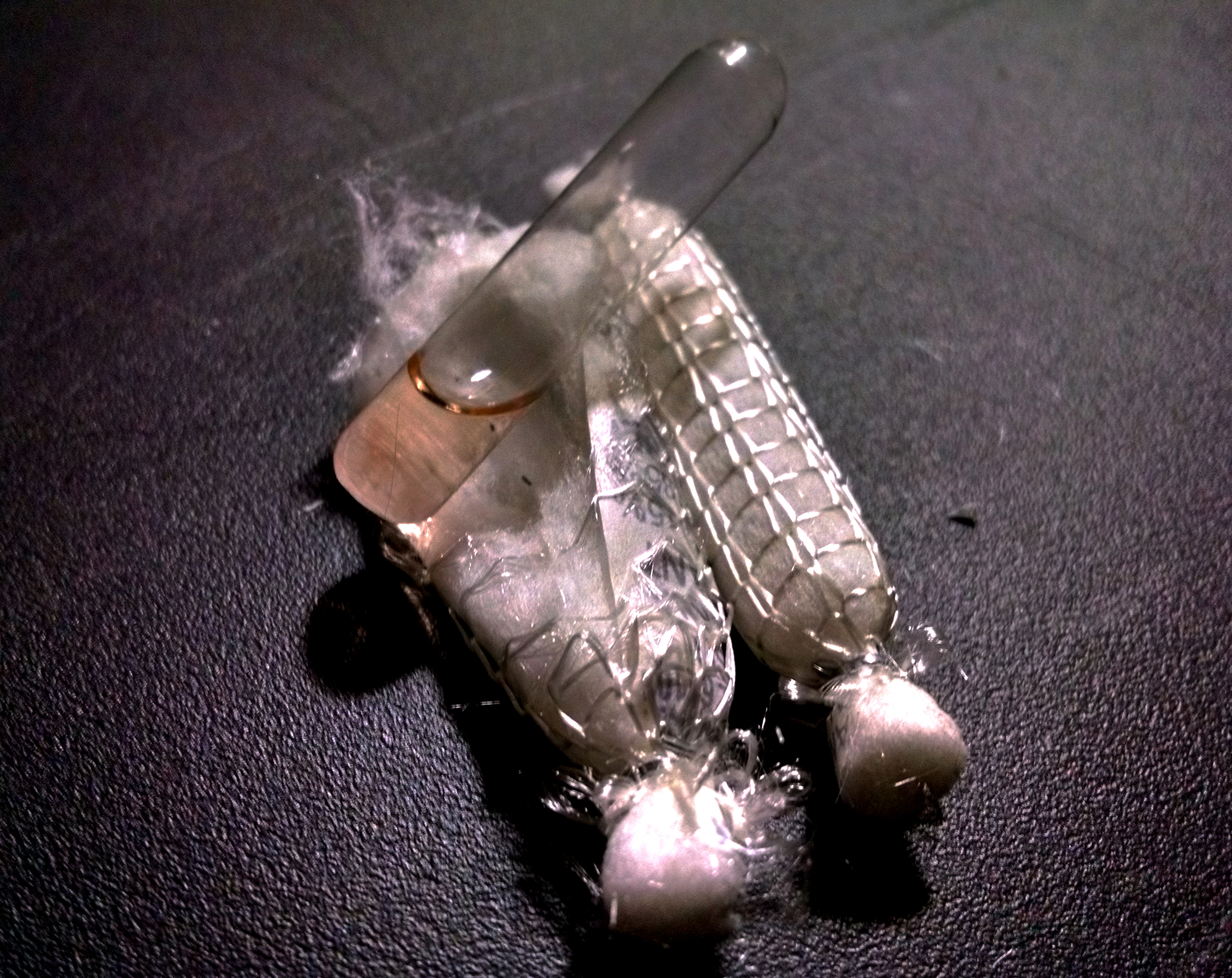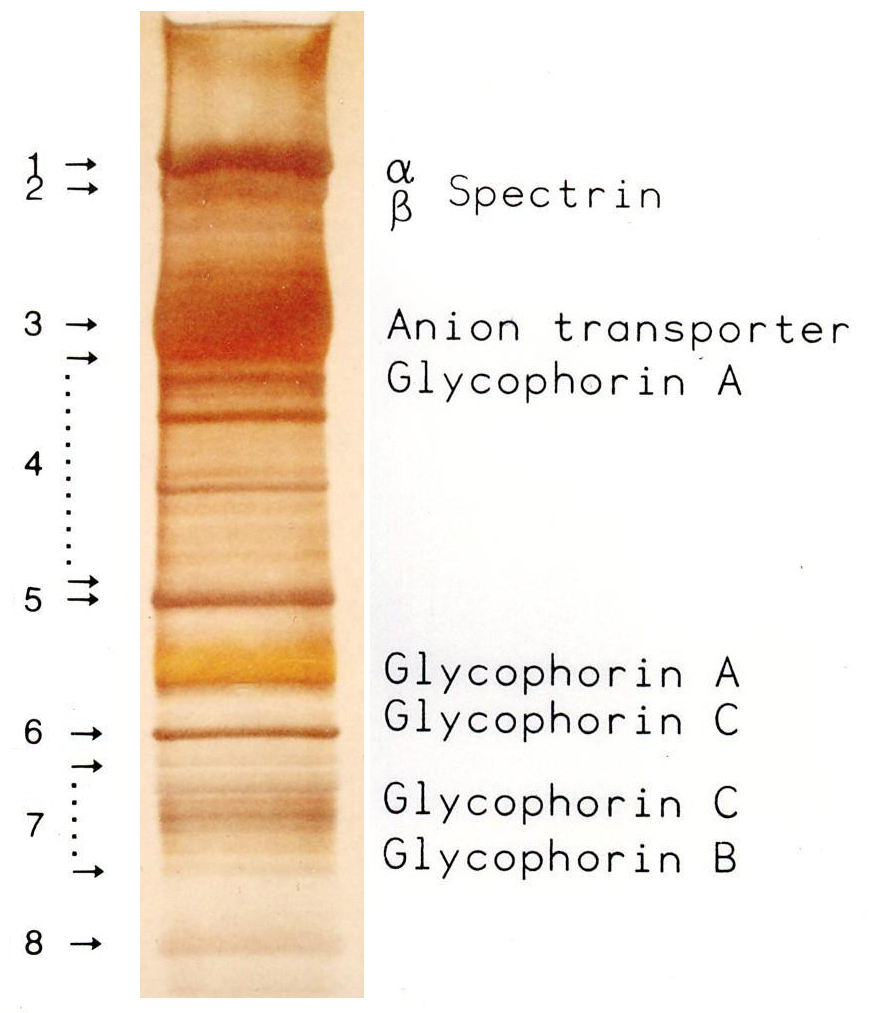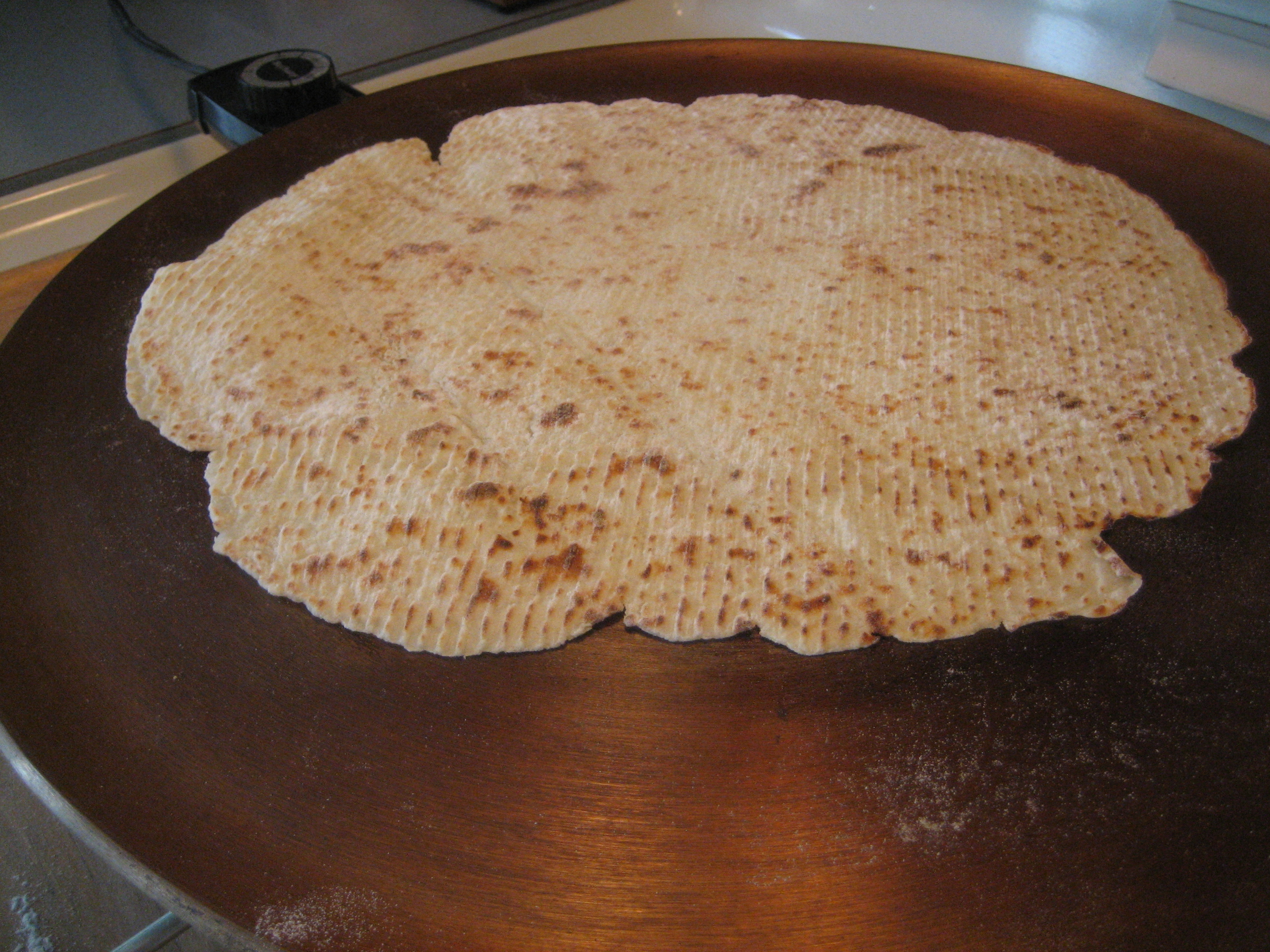|
Hartshorn
Hartshorn is the antler of male red deer. Derivatives Various nitrogen compounds were made from hartshorn shavings: * Oil of hartshorn is a crude chemical product obtained from the destructive distillation of deer antlers. * Salt of hartshorn refers to ammonium carbonate, an early form of smelling salts and baking powder obtained by dry distillation of oil of hartshorn. * Spirit of hartshorn (or spirits of hartshorn) is an archaic name for aqueous ammonia. Originally, this term was applied to a solution manufactured from the hooves and antlers of the red deer, as well as those of some other animals. The aqueous solution was colorless and pungent, consisting of about 28.5 percent ammonia. It was used chiefly as a detergent, for removing stains and extracting certain vegetable coloring agents, and in the manufacture of ammonium salts. Later, the term was applied to the partially purified similar products of the action of heat on nitrogenous animal matter generally. Finally, the t ... [...More Info...] [...Related Items...] OR: [Wikipedia] [Google] [Baidu] |
Springerle
Springerle () is a type of South German biscuit or cookie with an embossed design made by pressing a mold onto rolled dough and allowing the impression to dry before baking. This preserves the detail of the surface pattern. While historical molds show that springerle were baked for religious holidays and secular occasions throughout the year, they are now most commonly associated with the Christmas season. They are called ''anis-brödle'' in the Swabian dialect, and ''Anisbrötli'' (anise bun) in Switzerland. The name ''springerle'', used in southern Germany, translates literally as "little jumper" or "little knight", but its exact origin is unknown. It may refer the popular motif of a jumping horse in the mold, or just to the rising or "springing up" of the dough as it bakes. The origin of the cookie can be traced back to at least the 14th century in southwestern Germany and surrounding areas, mostly in Swabia. One of the oldest surviving molds, held at the Swiss National Muse ... [...More Info...] [...Related Items...] OR: [Wikipedia] [Google] [Baidu] |
Ammonium Carbonate
Ammonium carbonate is a chemical compound with the chemical formula . It is an ammonium salt of carbonic acid. It is composed of ammonium cations and carbonate anions . Since ammonium carbonate readily degrades to gaseous ammonia and carbon dioxide upon heating, it is used as a leavening agent and also as smelling salt. It is also known as baker's ammonia and is a predecessor to the more modern leavening agents baking soda and baking powder. It is a component of what was formerly known as sal volatile and salt of hartshorn, and produces a pungent smell when baked. It comes in the form of a white powder or block, with a molar mass of 96.09 g/mol and a density of 1.50 g/cm3. It is a strong electrolyte. Production Ammonium carbonate is produced by combining carbon dioxide and aqueous ammonia. About 80,000 tons/year were produced as of 1997. : An orthorhombic ammonium carbonate monohydrate is known (). It crystallizes in an ammonia solution exposed in a carbon dioxide-rich atmos ... [...More Info...] [...Related Items...] OR: [Wikipedia] [Google] [Baidu] |
Smelling Salt
Smelling salts, also known as ammonia inhalants, spirit of hartshorn, or sal volatile, are chemical compounds used as stimulants to restore consciousness after fainting. The usual active compound is ammonium carbonate—a colorless-to-white, crystalline solid ((NH4)2CO3). Since most modern solutions are mixed with water, they should properly be called aromatic spirits of ammonia. Modern solutions may also contain other products to perfume or act in conjunction with the ammonia, such as lavender oil or eucalyptus oil. Usage Historically, smelling salts have been used on people feeling faint, or who have fainted. They are usually administered by others but may be self-administered. Smelling salts are often used on athletes who have been dazed or knocked unconscious to restore consciousness and mental alertness. Smelling salts are now banned in most boxing competitions because of the concern that their effect could mask a more serious injury. They are also used as a form of st ... [...More Info...] [...Related Items...] OR: [Wikipedia] [Google] [Baidu] |
Baking Powder
Baking powder is a dry chemical leavening agent, a mixture of a carbonate or bicarbonate and a weak acid. The base and acid are prevented from reacting prematurely by the inclusion of a buffer such as cornstarch. Baking powder is used to increase the volume and lighten the texture of baked goods. It works by releasing carbon dioxide gas into a batter or dough through an acid–base reaction, causing bubbles in the wet mixture to expand and thus leavening the mixture. The first ''single-acting'' baking powder (meaning that it releases all of its carbon dioxide as soon as it is dampened) was developed by food manufacturer Alfred Bird in England in 1843. The first ''double-acting'' baking powder, which releases some carbon dioxide when dampened and later releases more of the gas when heated by baking, was developed by Eben Norton Horsford in the U.S. in the 1860s. Baking powder is used instead of yeast for end-products where fermentation flavors would be undesirable, or wher ... [...More Info...] [...Related Items...] OR: [Wikipedia] [Google] [Baidu] |
Silz Cerf22
Silz may refer to the following places: *Silz, Austria, in Tyrol, Austria *Silz, Mecklenburg-Vorpommern, in Mecklenburg-Vorpommern, Germany *Silz, Rhineland-Palatinate, in Rhineland-Palatinate, Germany {{geodis ... [...More Info...] [...Related Items...] OR: [Wikipedia] [Google] [Baidu] |
Carcinogen
A carcinogen () is any agent that promotes the development of cancer. Carcinogens can include synthetic chemicals, naturally occurring substances, physical agents such as ionizing and non-ionizing radiation, and biologic agents such as viruses and bacteria. Most carcinogens act by creating mutations in DNA that disrupt a cell's normal processes for regulating growth, leading to uncontrolled cellular proliferation. This occurs when the cell's DNA repair processes fail to identify DNA damage allowing the defect to be passed down to daughter cells. The damage accumulates over time. This is typically a multi-step process during which the regulatory mechanisms within the cell are gradually dismantled allowing for unchecked cellular division. The specific mechanisms for carcinogenic activity is unique to each agent and cell type. Carcinogens can be broadly categorized, however, as activation-dependent and activation-independent which relate to the agent's ability to engage dir ... [...More Info...] [...Related Items...] OR: [Wikipedia] [Google] [Baidu] |
Acrylamide
Acrylamide (or acrylic amide) is an organic compound with the chemical formula CH2=CHC(O)NH2. It is a white odorless solid, soluble in water and several organic solvents. From the chemistry perspective, acrylamide is a vinyl-substituted primary amide (CONH2). It is produced industrially mainly as a precursor to polyacrylamides, which find many uses as water-soluble thickeners and flocculation agents. Acrylamide forms in burnt areas of food, particularly starchy foods like potatoes, when cooked with high heat, above . Despite health scares following this discovery in 2002, and its classification as a probable carcinogen, acrylamide from diet is thought unlikely to cause cancer in humans; Cancer Research UK categorized the idea that eating burnt food causes cancer as a "myth". Production Acrylamide can be prepared by the hydration of acrylonitrile, which is catalyzed enzymatically: :CH2=CHCN + H2O → CH2=CHC(O)NH2 This reaction also is catalyzed by sulfuric acid as wel ... [...More Info...] [...Related Items...] OR: [Wikipedia] [Google] [Baidu] |
Asparagine
Asparagine (symbol Asn or N) is an α-amino acid that is used in the biosynthesis of proteins. It contains an α-amino group (which is in the protonated −NH form under biological conditions), an α-carboxylic acid group (which is in the deprotonated −COO− form under biological conditions), and a side chain carboxamide, classifying it as a polar (at physiological pH), aliphatic amino acid. It is non-essential in humans, meaning the body can synthesize it. It is encoded by the codons AAU and AAC. The one-letter symbol N for asparagine was assigned arbitrarily, with the proposed mnemonic asparagi''N''e; History Asparagine was first isolated in 1806 in a crystalline form by French chemists Louis Nicolas Vauquelin and Pierre Jean Robiquet (then a young assistant). It was isolated from asparagus juice, in which it is abundant, hence the chosen name. It was the first amino acid to be isolated. Three years later, in 1809, Pierre Jean Robiquet identified a substance from l ... [...More Info...] [...Related Items...] OR: [Wikipedia] [Google] [Baidu] |
Lefse
Lefse () is a traditional soft Norwegian flatbread. It is made with riced potatoes, can include flour, all purpose (wheat) flour, and includes butter, and milk, cream, or lard. It is cooked on a large, flat griddle. Special tools are used to prepare lefse, including a potato ricer, long wooden turning sticks and special rolling pins with deep grooves. Flavoring There are many ways of flavoring lefse. The most common is adding butter and sugar to the lefse and rolling it up. In Norway, this is known as . Other options include adding cinnamon, or spreading Jelly (fruit preserves), jelly, lingonberries, or Gomme (food), gomme on it. Scandinavian-United States, American variations include rolling it with a thin layer of peanut butter and sugar, with butter and white sugar, white or brown sugar, with butter and corn syrup, or with butter and salt, or with ham and eggs. Also eaten with beef and other savory items like ribberull and Mustard (condiment), mustard, it is comparable to ... [...More Info...] [...Related Items...] OR: [Wikipedia] [Google] [Baidu] |
Speculoos
Speculoos (; ; ) is a biscuit, originally manufactured in Belgium, made from wheat flour, candy syrup (from beet sugar), fat, and sometimes cinnamon. Speculoos were developed in the 20th century around the area of Verviers, as an alternative for people who could not afford Dutch speculaas. Belgian Speculoos includes fewer spices than Dutch speculaas, as the spices were much more expensive to import to Belgium than to the Netherlands. The origins of speculaas are much older. In the 2020s the names ''speculaas'' and ''speculoos'' are sometimes used interchangeably in Flanders. Brands In Europe, Lotus Speculoos is the most recognized brand. This manufacturer supplied the biscuits individually packaged to the catering industry. In the United States and the United Kingdom, the same company is branded as Lotus Biscoff, short for ''biscuit with coffee''. Company founder Jan Boone Sr. created the original recipe in 1932. In October 2020, Lotus Bakeries decided to omit the word "sp ... [...More Info...] [...Related Items...] OR: [Wikipedia] [Google] [Baidu] |
Basler Läckerli
The Basler Läckerli (also Leckerli or Läggerli, meaning "delicious" in German and ''-li'' being a diminutive suffix) is a traditional hard spice biscuit originating from Basel, Switzerland. It is made of honey, hazelnuts, almonds, candied peel, and Kirsch. After baking in a thin layer, the still hot dough is topped with a sugar glaze and cut into rectangular pieces. Basler Läckerli were originally created by local spice merchants over 700 years ago and are available year-round. Recipe Basler Läckerli are made primarily from wheat flour, honey, candied fruit (orange peel, lemon peel) and nuts (hazelnuts, almonds). The dough is rolled out flat, baked, then brushed over with a sugar glaze and cut into rectangular pieces (the Läckerli) while still warm. History When the trade in oriental spices reached Europe in the 11th century, the wealthy monasteries were the first to use them to flavor honey cakes. This custom gradually spread to the towns, starting the gingerbread cra ... [...More Info...] [...Related Items...] OR: [Wikipedia] [Google] [Baidu] |






